Better Swimming Through Technology; Brave New World
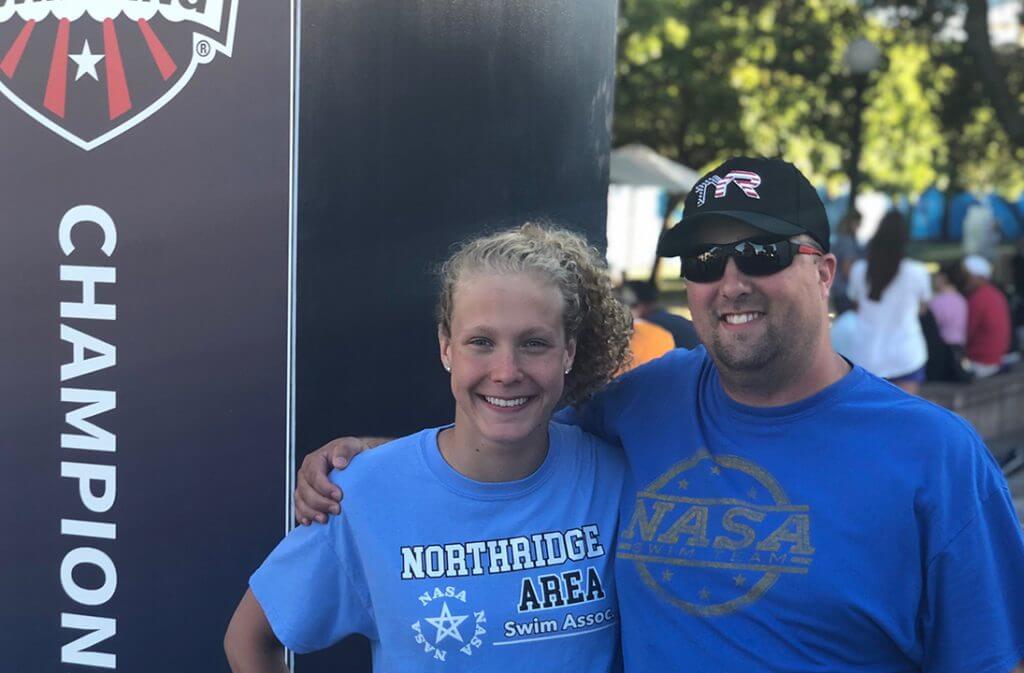
Kyle Hembree became head coach at Northridge Swimming Association in Middlebury, Indiana in May 2017. After six years as an assistant, he is casting his own imprint on his multi-sectional champion charges through the use of advanced swimming technology. In the last 18 months he has gone all-in using TritonWear, an artificial intelligence-based coaching tool produced by a firm in Toronto, Ontario, a swimming technology company.
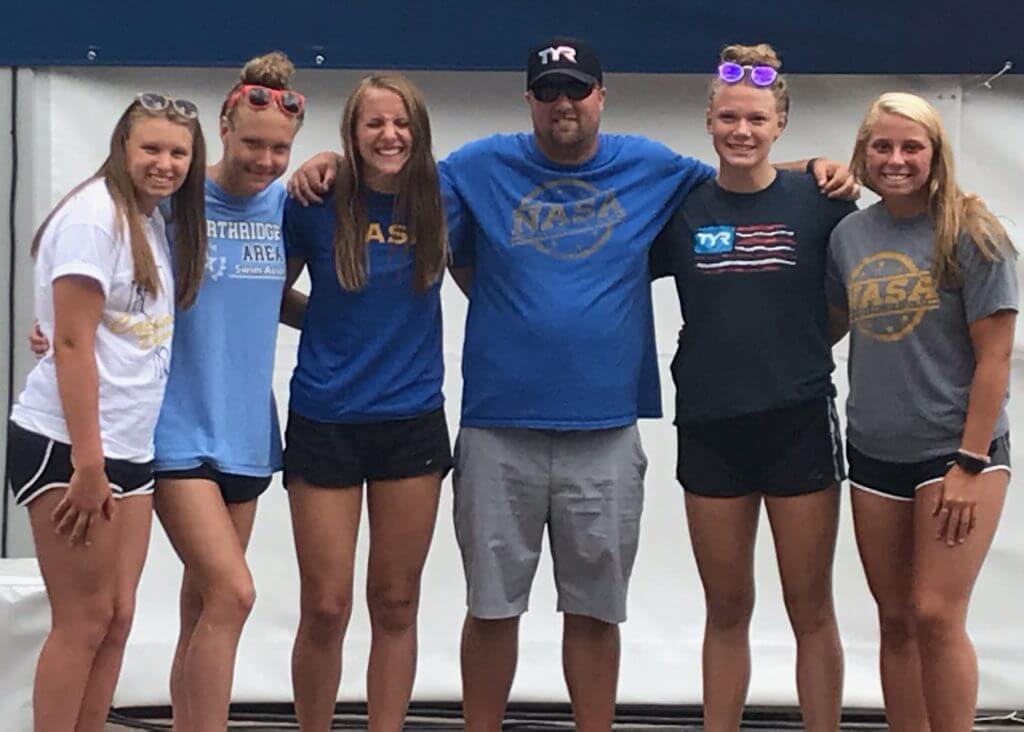
2019 Junior Nationals, Left to right – Anna Yeater, Elsa Fretz, Kenzie Weber, Kyle Hembree, Jenna Nethercutt, Haley Dygert; Photo Courtesy: Kyle Hembree
The company’s latest hardware iteration, the Triton2, is a great complement to its comprehensive swim analytics platform that tracks 13 different metrics based on swimmer motion. The metrics include splits, stroke rates, index and speed, DPS, time in breakouts, turns and underwater. In short, the information recorded in a small unit placed inside a swimmer’s cap, is transmitted immediately to an iPad. This data gives coach and swimmer the ability to track training, diagnose weaknesses and monitor progress. Additionally, motion analysis software syncs video with the power of acceleration and speed data. The resulting frame by frame output clearly indicates which movements help a swimmer gain or lose speed within their strokes and skills.
The Northridge Experience
NASA is a technique driven club that prides itself on swimming efficiency. Initially Hembree bought 10 TritonWear units to work with 22 athletes doing test sets. However, he gradually transitioned the units to his national team members for entire workouts so the coaching staff could best utilize TritonWear’s load monitoring system.
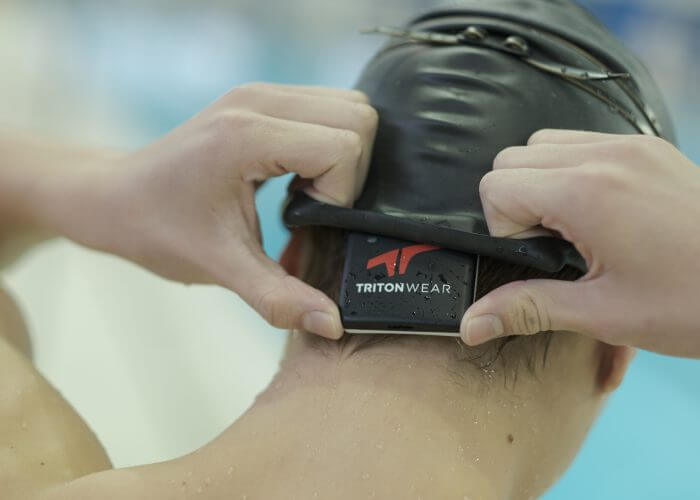
Swimming technology manufacturer TritonWear’s Triton2 unit slips under the cap and connects to any mobile device.
“This summer we experimented with power metric increase,” says Hembree. We had a kinesiologist come in several times a week to work with our national team athletes in order to develop data to effect more powerful starts and turns. We are still processing how this went, but the short term results are looking promising,” he says.
“TritonWear usage reinforced our discussions with swimmers that efficient swimming is Fast swimming,” says Hembree. It revealed times swum, measured efficiency and allowed athletes to see why their efficiency rating wasn’t what it should be. These days any discussion I have with a swimmer about TW data always starts with the stroke index (measurement of efficiency). From there we look at other metrics to determine why a particular swim was more or less efficient than the one before.
“At the beginning of the season I discuss metrics with swimmers. My expectation is that after a conversation the swimmer goes home, reviews the data and then meets with me to discuss and study the charts. I carry an iPad on deck during sets to gather information to relay to swimmers between reps. Early on the data collected indicated that we were pretty efficient. However, the real key is finding an application in the pool — and in a race. TritonWear, with data from multiple athletes, has given me a better perspective of where we stand with technique and efficiency as an organization. From there I relay the information to our developmental coaches so they can plan accordingly,” says Hembree.
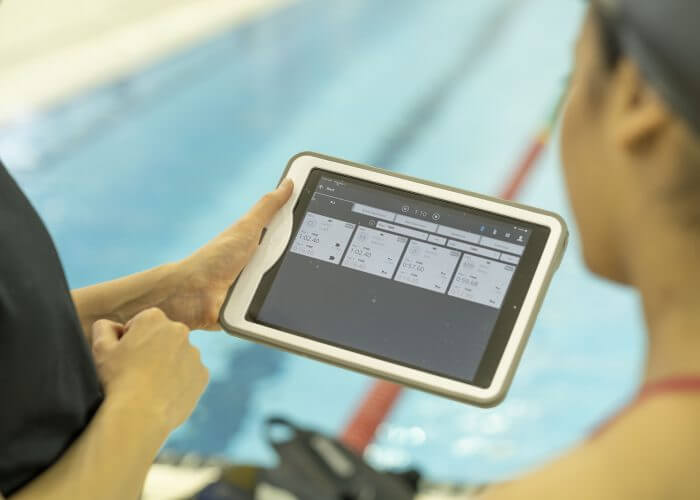
“I carry an iPad on deck during sets to gather information to relay to swimmers between reps,” coach Kyle Hembree.
“TritonWear’s swimming technology allows us to compare current with earlier data. This feature enables athletes to see improvements via various metrics throughout the season, not just through on time-based parameters. I like that the information gained from our most involved athletes permits discussions about daily training. As a results I am more deliberate with TW use and frequency, especially in the creation of monthly test sets which allows swimmers to compare metrics and note improvement,” he says.
“About 25 % of our athletes have embraced this technology and they have enjoyed the greatest success. I now have more educated swimmers who can talk about their strokes, metrics and race results. Overall it has given our swimmers much better understanding of what it takes for them to be faster.”
“As for improvement in the water, of the committed, more than 70 percent have seen some type of improvement that we can relate back to the information they have gotten from TW. Also, those who did not see a lot of improvement were the ones that were not looking at and studying their data like we had asked them to.
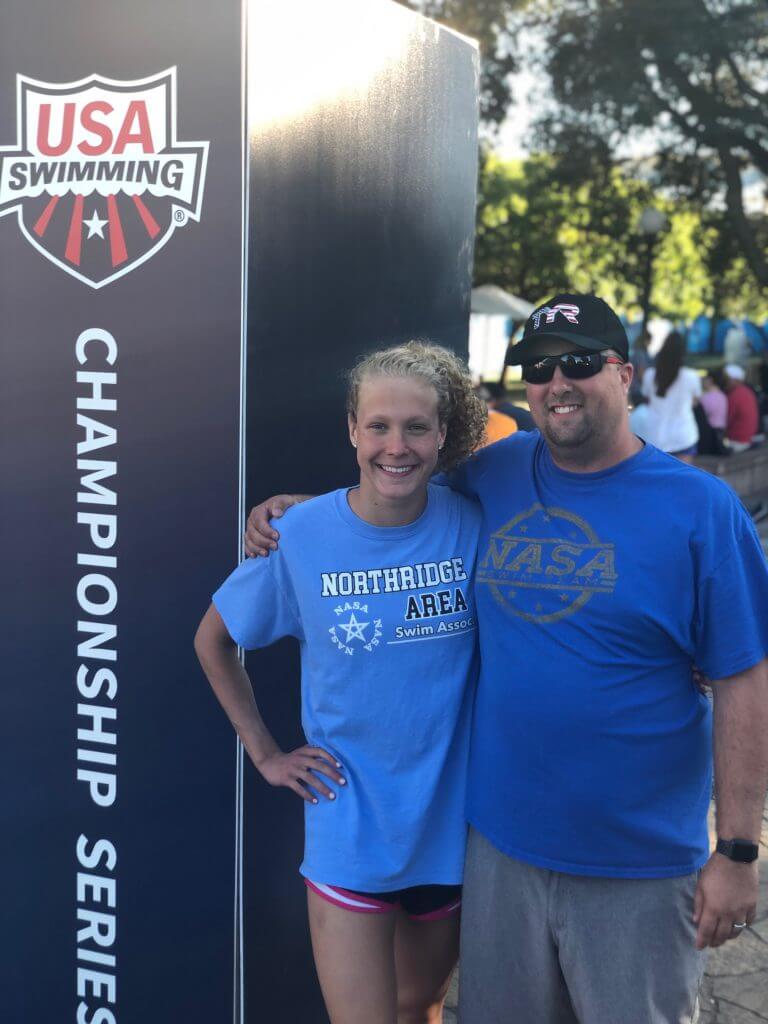
2019 Senior Nationals-swimmer Elsa Fretz and Coach Kyle Hembree; Photo Courtesy: Kyle Hembree
“I have pondered what our season results would have been without TritonWear. To be fair, some of the results would have been the same but not as widespread. The global impact of being able to see where we are as an organization was priceless and would have been much more difficult to see without TW,” says Hembree.
“One learning I gained was that to get the best use from TritonWear every athlete needs their own device. We did not have that option initially. Our plans for the 2019-2020 season include a TritonWear 2 unit for every swimmer that wants one. Athletes will wear a device for every training session. We will also use the units at more competitions. That was hard to do when we shared units during competitions, with our dedicated unit policy we should function more successfully,” he says.
About TritonWear Swimming Technology
TritonWear pricing is an annual per athlete subscription, ($188 USD, volume discounts available) and includes all TritonWear tools plus one free Triton 2 unit.




